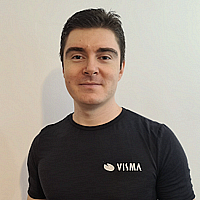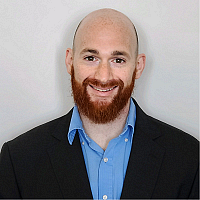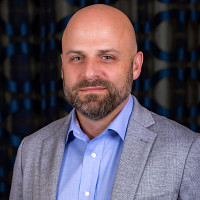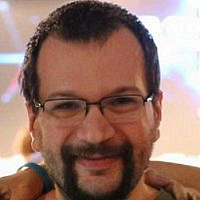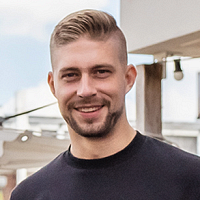Catalin is a security professional specialised into Infrastructure and Product Security areas with a strong knowledge of Security Operations.
He works at Visma as a Security Operations Manager, enjoying his time in the Security Operations team providing technical leadership in various security areas, having a true desire to drive the Cyber Threat Intelligence (CTI) field and building an Infrastructure Security Program through the Visma Security Program - VSP.
Catalin is the OWASP Timisoara Chapter Leader where he aims to create a strong local security community focused on improving the application security world and creating security awareness. He also has several recognized certifications in the security field and in his spare time he enjoys reading lots of cool stuff, playing football, biking and hiking.
Espen Johansen works at Visma as the Chief Security Officer and is globally accountable for security. He enjoys his time in the Security Operations team providing technical leadership in various security areas, like Cyber Threat Intelligence (CTI) and building an Infrastructure Security Program through the Visma Security Program - VSP.
In today's dynamic business landscape, mergers and acquisitions (M&A) have become crucial strategic initiatives for organizations seeking growth, market expansion, and competitive advantages. However, M&A activities also introduce various security challenges, making it essential to incorporate robust cybersecurity measures throughout the process. This presentation will focus on the significance of Cyber Threat Intelligence (CTI) as a key component in the M&A process.
CTI encompasses the collection, analysis, and dissemination of actionable intelligence about potential cyber threats and adversaries. By harnessing the power of CTI, organizations involved in M&A can significantly enhance their ability to identify and mitigate cyber risks, protect sensitive data, and ensure a successful integration of systems and infrastructure.
During this presentation, we will delve into the various stages of the M&A process and highlight how CTI can add value at each step. Starting from the due diligence phase, we will explore how CTI can be leveraged to evaluate the cybersecurity posture of the target company, identify hidden risks, and validate the effectiveness of existing security controls. We will then discuss the importance of incorporating CTI into the negotiation and agreement stages to address cybersecurity concerns, evaluate potential liabilities, and establish clear security requirements.
Furthermore, we will delve into the post-merger integration phase, where CTI plays a critical role in developing a comprehensive cybersecurity strategy. We will examine how CTI can help organizations identify and prioritize security gaps, facilitate the integration of disparate security systems, and proactively detect and respond to emerging threats. Additionally, we will discuss the importance of ongoing CTI efforts to ensure continued visibility into potential risks and the necessity of adapting security measures to the evolving threat landscape.
By the end of this presentation, attendees will have a clear understanding of how CTI serves as a fundamental enabler for ensuring the security and success of M&A activities. They will gain insights into practical strategies for incorporating CTI into the various stages of the M&A process and learn about the benefits of a proactive and intelligence-driven approach to cybersecurity in mergers and acquisitions.






